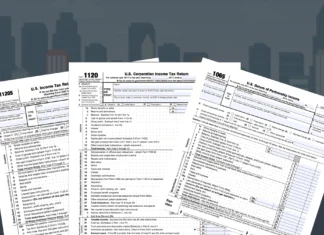Investing is the best way to build wealth, but with so many options for investment, how do you know where to begin? For beginners, the number of options is simply overwhelming. In this guide, we’ll cover some of the most popular types of investments worth considering, as well as the strengths and weaknesses you should consider before investing in each.
Why Invest?

First, let’s cover the importance of investing. You make a finite amount of money. Why wouldn’t you just spend it or save it? Why would you choose to take a risk with an investment?
For starters, investing has the potential to earn you far more interest than you would make by simply utilizing a straightforward savings account. Most modern banks offer less than 1 percent interest, but depending on how you invest your money, you could end up with a 10 percent annual return—or even more. Investing consistently, from an early age, is a straightforward way to generate wealth, and even if you’ve already generated wealth, investment can help you protect that wealth by beating inflation and hedging against risk.
On top of that, investing could be a route to financial independence, granting you passive income streams that don’t require your ongoing effort. And for some people, investing is fun.
The Most Important Types of Investments to Consider
You’ll have your choice of different investments to consider, but these are some of the most popular.
1. Real estate.

According to LosAngelesPropertyManagementGroup.com, buying property is one of the best investment options all-around. This is partially due to the number of options you have in real estate; for example, you can choose to invest in an income-generating rental property that produces a consistent stream of passive income. Or you can invest in commercial real estate, and hope to capitalize on long-term growth. You can even invest in real estate investment trusts (REITs), which allow you to invest in real estate indirectly; rather than looking for specific properties yourself, you provide money to a real estate investing company that invests it on your behalf.
2. Equities/stocks.
Another common investment choice is equities, or stocks, which allow you to purchase shares of ownership in publicly traded corporations. Each company lists shares of its stock at a price that changes depending on market demand; you can purchase shares and anticipate those shares rising in price if the company performs well. In some cases, you may also be able to collect on company dividends, which are distributions of profits to shareholders. In some cases, you can get 2 to 4 percent, or even more, on your investment in the form of a dividend. However, investing in stocks can also make you vulnerable to market volatility.
3. Bonds.

A more stable, but less rewarding option, is bonds. Bonds function almost like loans to businesses and government organizations; you provide the principal, and they pay you interest based on predetermined terms. Bonds have historically been a useful way to balance out the higher-risk, higher-reward nature of stocks.
4. Mutual funds and ETFs.
If you’re looking for even more balance, you could choose to invest in a mutual fund, or an exchange-traded fund (ETF). Though structurally different, these concepts are very similar at a glance; both options allow you to invest in many different options at once. For example, you may be able to invest in a collection of different dividend-paying stocks or invest in a mix of stocks and bonds, based on certain parameters. In any case, you should consult with an investment banker before you make any moves. This is just one of the many functions investment banks offer, and if you plan to invest in anything it’s important to know this. If you lack knowledge in this department Wall Street Prep wrote a very helpful guide worth reading.
5. Commodities.

You could also invest in commodities, like oil or sugar. Commodities trading tends to be volatile and is highly dependent on changes in supply and demand, so it’s not often a great option for new investors.
6. Derivatives.
Derivative financial products are based on other financial products. For example, if you trade futures contracts, you can buy and sell financial assets that attempt to predict the future price changes of commodities and other financial instruments. As you might have guessed, derivatives trading is more complex than other types of trading, and requires more education and experience.
7. Currencies.

It’s also possible to invest in other currencies, though this is rarer. In the past, your only real option was to invest in the currency of another country. Today, you could invest in cryptocurrency.
8. Alternative investments.
Most other types of investments are considered “alternative investments,” due to their more obscure, potentially less reliable nature. One popular option here is investing in precious metals like gold or silver, since these metals are seen to be inherently valuable (more so than shares of stock in a given company). You might also invest in works of art, bottles of wine, or collectibles like trading cards, if you believe they’ll appreciate in value over time.
Common advice is to diversify your portfolio, meaning you shouldn’t put your entire wealth into one type of asset. Distributing funds across multiple assets will help you achieve a more consistent overall growth rate, and protect you from significant losses from any one area. Make sure you rely on a mix of different assets when you decide to move forward with investing.
Utilizing a Retirement Account

If you want to invest for the long-term and maximize your potential gains, you should consider utilizing a retirement account. In the United States, the IRS defines many different types of retirement plans, each of which has special tax advantages (and other incentives) designed to help you save more and build more wealth. For example, if your employer offers a 401(k), you can take advantage of it to contribute pre-tax money, ultimately increasing the amount of money you can put toward your investments. And anyone can make use of a Roth IRA, which allows you to grow your wealth tax-free.
There are some weaknesses to consider with these plans as well; for example, in a Roth IRA, if you withdraw your money before you reach age 59.5, you may face a tax penalty on your gains (though you can typically withdraw your principal at any time for free). However, they typically favor you in the end, and you can use these plans to invest in almost any of the investments listed in the preceding section.
It’s up to you how you want to invest, and there is a diversity of financially viable options available to you. Do your research, pick an asset class you feel comfortable with to start, then slowly build your experience and expand to other areas to diversify your portfolio.









